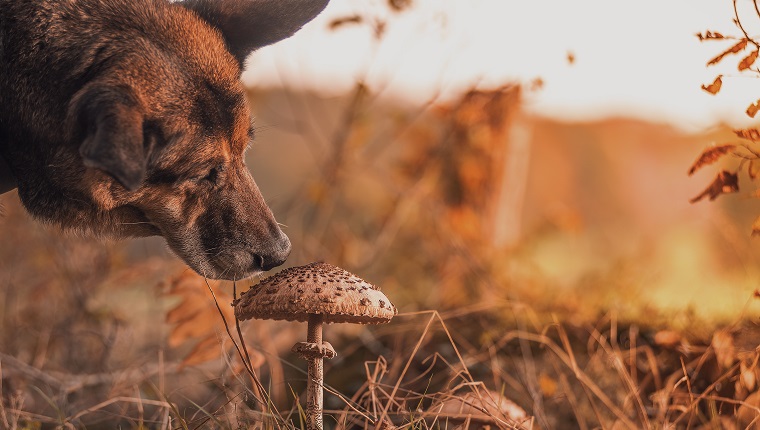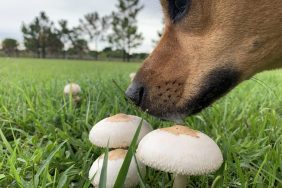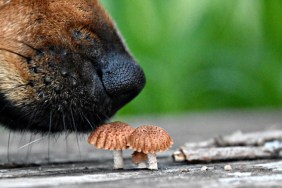On September 20th, 2021, Teresa Gibson of Holly Springs, North Carolina took her dog Cash to the vet after he ingested mushrooms from her backyard. The next day, she had to put him down. She reported the incident to WRAL.com in hopes of helping someone else avoid this tragedy.
Mixed-breed, Cash, was a chill dog who just loved to eat — maybe like your dog does. Gibson described her late pup as fun, friendly, loving, and a bit “pudgy” from his snack-seeking endeavors.
Like any other day, Gibson let Cash out into the backyard and noticed that he’d gotten into a patch of mushrooms; not knowing what kind they were, she took him to the emergency room.
On that day, the vet told Gibson that “the most Cash might experience was a strong stomach ache,” so she took him home and kept an eye on him.
More Than A Stomach Ache
SAD STORY: Poisonous death cap mushroom killed a family dog. More about the mushroom and how you can prevent your dog from eating one: https://t.co/o4kzlIQr39 pic.twitter.com/TsHZD6xZGj
— Erika Stanish (@Erika_Stanish) August 21, 2018
On the following day, Gipson knew something was wrong, as the fun and friendly dog was “moving around very slowly,” she told WRAL. “I saw his legs get really wobbly, and he went down.”
Back at the hospital, veterinarians reevaluated Cas. They determined that his liver was failing due to the toxins in the mushrooms, and that they’d have to put him down.
“Just watching him suffer was unbearable,” Gipson said. “I’m going to miss his smile.”
Gipson articulated to WRAL that “it’s too late for her dog,” but maybe her story can help other dog parents out there be aware of what could be lurking in their backyard.
What To Do If You Suspect Your Dog Ate Poisonous Mushrooms
(Picture Credit: Gerd Pfeifer / EyeEm/Getty Images)Nine of the most toxic mushrooms within the United States are right there in North Carolina, where the Gibson family lives. Knowing what kind of plant life, and the dangers of it, within your area could save you from losing a member of your family, unnecessarily.
Dr. Anusha Balakrishnan, of Triangle Veterinary Referral Hospital in Holly Springs, told WRAL that mushrooms such as the Autumn Skullcap, the Chlorine Lepidella, and any from the Amanita family, are all critical to stay clear of.
Dr. Balakrishnan went on to say, “If your dog eats a mushroom and is acting strange, you should take the dog in within four hours of the mushroom having been eaten. After that, the toxins start causing problems.”
Before attempting to treat your dog yourself, call your emergency vet or the ASCPA Poison Control Hotline, (888) 426-4435, to receive guidance and set the wheels in motion for getting your dog the appropriate help they need.
Balakrishnan further recommended that if you see your dog consume a mushroom, you can attempt to get them to vomit using hydrogen peroxide with your vet’s guidance. The American Kennel Club backs this strategy and recommends using no more than a 3 percent concentration with a turkey baster or feeding syringe.
Have you had any experience with your dog consuming mushrooms? Do you make sure to remove any mushrooms that might be growing in your dog’s outdoor area? Then let us know in the comments below.









